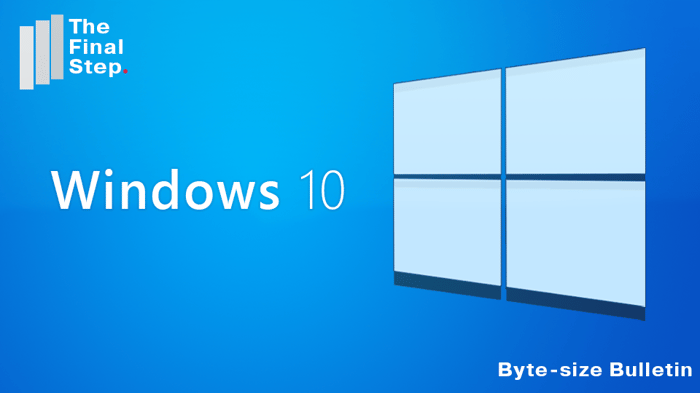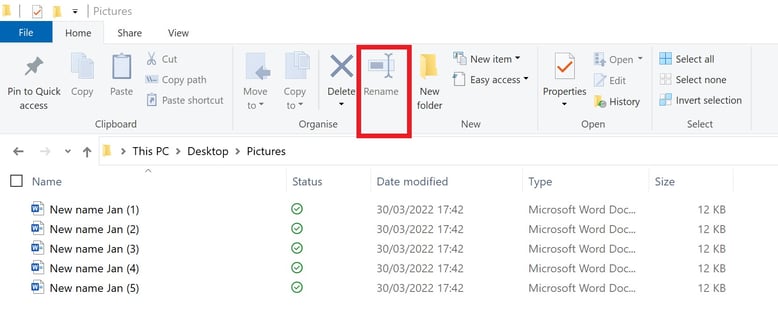
The seemingly limitless availability of storage space encourages us to keep lots of digital files. Files we download aren't always named in a way that is recognisable to us or easy to search. Sometimes we need to rename files that are unhelpfully named.
Easy enough when you just need to edit one filename. However, we may need to bulk edit several file names. This is particularly the case with photos, invoices or, if you have ever gone paperless, you may find the need to rename in bulk a whole slew of scanned documents that are named with a date and time stamp.
Here is how to rename, in bulk, files in a Windows folder. But before you do this you may want to copy the files or check you have a restorable backup, in case something untoward happens as you are renaming.

- Open Windows Explorer, navigate to the folder with the files to rename and from the View menu, select "Details".
- Select the files you want to rename, you have options on how to select files:
- Click on the first file and then SHIFT + click on the last one, to select the first, last and all the files in between.
- Click on the first file and then CTRL + click on any others. This allows you to pick the precise files you want, regardless of where they appear in the list.
- Click on any file and then on the keyboard hold down CTRL + A. This selects all the files in the folder.
- From File Explorer's Home tab click on "Rename" or press F2 to activate the rename feature.
- One of the file names will be highlighted, ready for you to type.
- Type in the new name you want for all your files.
- Once finished with the name, press Enter on the keyboard to have the new name accepted.
- All the selected files will change their names and because files cannot have the same name as each other in a given folder Windows will add a sequential number to each one.
If the name change has unexpected consequences you don't like, CTRL + Z will undo your most recent changes and CTRL + Y will redo them.
It may be that you need to make more edits to the file names, here's how to edit file names individually:
- Click on the first file in the folder list so it is highlighted.
- From the Home tab on File Explorer's ribbon, select "Rename", or press F2.
- The file name will activate to accept your typing.
- Use the mouse cursor or keyboard arrows to navigate to where you want to edit and type your changes.
- Once finished, press "Tab" on the keyboard. Windows will highlight the next file name ready for you to edit, locate the cursor and type.
- If there is a file name you don't need to edit, just press "Tab" to move on to the next. Repeat until you are on a file name you do need to change.
- Work your way through the list.
The above methods are fine if you don't have too many files or if the edits are not too onerous. Future tips will cover what you can on a Mac and how you can make more complex changes if you need to.


%20(Facebook%20Post)%20(1200%20%C3%97%20628px)-3.png?width=420&height=252&name=Byte%20Size%20(1000%20%C3%97%20700px)%20(Facebook%20Post)%20(1200%20%C3%97%20628px)-3.png)

